by Steve Gardner
 Magnus Carlsen and Fabiano Caruana faced off for the World Chess Championship over three weeks London. I’d been looking forward to the match all year, and following the progress of the two players towards it. This piece looks at the two players and the situation before the match, gives an account of the Championship games, and concludes with some reflections on the significance of the match for the participants, and for the sport.
Magnus Carlsen and Fabiano Caruana faced off for the World Chess Championship over three weeks London. I’d been looking forward to the match all year, and following the progress of the two players towards it. This piece looks at the two players and the situation before the match, gives an account of the Championship games, and concludes with some reflections on the significance of the match for the participants, and for the sport.
Before the Match
The Challenger – Fabiano Caruana
Caruana is the toughest test Carlsen has yet faced in a World Championship match: more creative and dangerous in attack than the stolid defensive master Sergey Karjakin, and younger and more formidable even than the great Vishy Anand, who, while he was one the greatest players of his generation, was well into his forties and past the peak of his playing strength in the two world championship matches he played against Carlsen in 2013 and 2014. Caruana had a poor start to the year at the Tata Steel tournament in Wijk aan Zee in January, but since then he has been in utterly brilliant form, winning not only the Candidates tournament in March to earn his right to play this match, but also the Grenke Chess Classic in April, the Norway Chess tournament in June, and (jointly with Carlsen and Aronian), the Sinquefield Cup in August. He also finished second in the US Championship. This sustained run of strong chess has seen his rating rise from 2799 at the end of 2017 to 2832, within 3 points of Carlsen, a statistical near-tie; this is the first time since Carlsen’s rise to the top of the chess rankings in 2012 that any player has been so close to him in rating. A single victory by Caruana during the match would see him overtake Carlsen and become the #1-ranked player in the world.
The Champion – Magnus Carlsen
Carlsen’s form in 2018 was slightly less impressive, though by no means bad. He won the Tata Steel tournament in January, the Fischer Random World Championship in February (defeating Hikaru Nakamura), the Shamkir Chess tournament in April, and as mentioned above shared first place in the Sinquefield Cup in August. He’s played many beautiful games in his characteristic boa constrictor style, squeezing out wins in long games out of technical endgame positions, including a memorable victory over Nakamura in the last round of the Sinquefield Cup, demonstrating a beautiful winning idea. But this year we have also seen some cracks appear in his normally impregnable composure, an un-Magnus-like indecisiveness at key moments, opponents allowed to escape lost positions, such as his game with Caruana at the Sinquefield Cup where Magnus misplayed a winning attack and Caruana escaped with a draw. His rating going into the match of 2835 had scarcely changed this year; if it hadn’t risen like Caruana’s, just maintaining a rating at these stratospheric heights is an impressive achievement. Still, Carlsen’s peak rating of 2882 (the highest ever by any human player) was achieved in May 2014, and is nearly 50 points higher than his rating now. So questions were in the air which the course of the match would amplify: what are the reasons for Carlsen’s rating decline? Would he be able to bring his best game to the match? And if not, would that be enough to keep Caruana at bay? Read more »
 Peter van Ham’s Alchi, the third volume of a monumental trilogy published by Hirmer on the Buddhist art of western Tibet, must be one of the finest art books ever produced. Its subject, the site of Alchi, sits on the bank of the Indus River in Ladakh, in the high mountain ranges to the east in what is now the Indian state of Kashmir, some thirty-five miles northwest of the capital city of Leh. Unlike Guge, the subject of van Ham’s second volume, Alchi is relatively accessible—good roads now connect Alchi to Leh and (a little less smoothly) to the haunting monastery of Lamayuru, still farther to the north and west.
Peter van Ham’s Alchi, the third volume of a monumental trilogy published by Hirmer on the Buddhist art of western Tibet, must be one of the finest art books ever produced. Its subject, the site of Alchi, sits on the bank of the Indus River in Ladakh, in the high mountain ranges to the east in what is now the Indian state of Kashmir, some thirty-five miles northwest of the capital city of Leh. Unlike Guge, the subject of van Ham’s second volume, Alchi is relatively accessible—good roads now connect Alchi to Leh and (a little less smoothly) to the haunting monastery of Lamayuru, still farther to the north and west.
 Is it possible to have mild tyranny? It sounds like an oxymoron, and certainly not the kind of thing citizens in a democracy might choose. But when you consider the relationship many of us have with technology there is something gently tyrannical involved. In theory we are free to abandon our computer screens, at liberty not to check our phones. In practice we are ensnared in digital networks for most of our waking hours (and longer, for those with smart watches that monitor sleep patterns). In submission to devices, we surrender vast quantities of personal data. Somewhere in the information harvested by powerful tech companies – Amazon, Apple, Facebook and Google – there is a reliable account of where you are, where you are going and who you will see. With a bit of algorithmic extrapolation, it is possible also to predict how you feel.
Is it possible to have mild tyranny? It sounds like an oxymoron, and certainly not the kind of thing citizens in a democracy might choose. But when you consider the relationship many of us have with technology there is something gently tyrannical involved. In theory we are free to abandon our computer screens, at liberty not to check our phones. In practice we are ensnared in digital networks for most of our waking hours (and longer, for those with smart watches that monitor sleep patterns). In submission to devices, we surrender vast quantities of personal data. Somewhere in the information harvested by powerful tech companies – Amazon, Apple, Facebook and Google – there is a reliable account of where you are, where you are going and who you will see. With a bit of algorithmic extrapolation, it is possible also to predict how you feel. CRISPR bombshell: Chinese researcher claims to have created gene-edited twins
CRISPR bombshell: Chinese researcher claims to have created gene-edited twins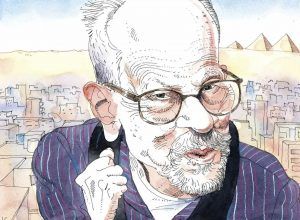 I met Naguib Mahfouz once. It was in the winter of 2006, and I’d been living in Cairo for three and a half years. The writer Gamal Al-Ghitani, an old friend of Mahfouz’s, provided me with an introduction to one of his weekly gatherings. I went to a Holiday Inn in the suburb of Maadi. The hotel faced the Nile across four lanes of traffic. There was a metal detector at the front door. Ever since he was nearly killed by a young fundamentalist in 1994, Mahfouz no longer frequented the downtown cafés where he had met friends and fellow writers for half a century.
I met Naguib Mahfouz once. It was in the winter of 2006, and I’d been living in Cairo for three and a half years. The writer Gamal Al-Ghitani, an old friend of Mahfouz’s, provided me with an introduction to one of his weekly gatherings. I went to a Holiday Inn in the suburb of Maadi. The hotel faced the Nile across four lanes of traffic. There was a metal detector at the front door. Ever since he was nearly killed by a young fundamentalist in 1994, Mahfouz no longer frequented the downtown cafés where he had met friends and fellow writers for half a century. The “Easy Problems” of consciousness have to do with how the brain takes in information, thinks about it, and turns it into action. The “
The “Easy Problems” of consciousness have to do with how the brain takes in information, thinks about it, and turns it into action. The “
 The earliest letters are sometimes very funny, as Larkin tries on attitudes. At Oxford he claims to be lumbered with ancient and/or mentally defective tutors; his work appears in magazines but is no good; he is upbraided when he reads for pleasure. He tailors his tone to the recipient: bluff and undeluded for Sydney Larkin (‘Pop’), safely and tenderly domestic for Eva (‘Mop’) and affectionately satirical for his older sister, Kitty. He includes some moody Oxford scenery: ‘the playing fields wait for the games of this afternoon; through the unecstatic street the gowned bicycles are whirling.’ This is pretty sophisticated for an eighteen-year-old – partly a parody of the promised bicycle races in Auden’s ‘Spain’, partly the kind of ‘re
The earliest letters are sometimes very funny, as Larkin tries on attitudes. At Oxford he claims to be lumbered with ancient and/or mentally defective tutors; his work appears in magazines but is no good; he is upbraided when he reads for pleasure. He tailors his tone to the recipient: bluff and undeluded for Sydney Larkin (‘Pop’), safely and tenderly domestic for Eva (‘Mop’) and affectionately satirical for his older sister, Kitty. He includes some moody Oxford scenery: ‘the playing fields wait for the games of this afternoon; through the unecstatic street the gowned bicycles are whirling.’ This is pretty sophisticated for an eighteen-year-old – partly a parody of the promised bicycle races in Auden’s ‘Spain’, partly the kind of ‘re Culture shapes who we are, so it follows that it would also shape our manifestations of stress, mental disorder, emotion. Yet, that also implies a kind of messiness that modern psychology and psychiatry, particularly the American kind, have spent the last 100 years struggling to tidy up.
Culture shapes who we are, so it follows that it would also shape our manifestations of stress, mental disorder, emotion. Yet, that also implies a kind of messiness that modern psychology and psychiatry, particularly the American kind, have spent the last 100 years struggling to tidy up. It is worth noting
It is worth noting However inclined by their training to vacillate, scholars in the humanities are increasingly being asked to take sides. Should they support or oppose their students’ efforts to ban a reactionary speaker from campus? Should they defend the feminist philosopher who affirms the possibility of transracial identity or join those demanding her article be retracted? Should they remove an influential writer from the syllabus because of his fascist sympathies? Should they sign the petition urging their professional organization to join the Boycott, Divestment, and Sanctions campaign against Israel? So much of academic life seems colored by high-stakes political struggles, and so many decisions large and small are now treated as gestures of allegiance to particular ideological camps and as betrayals of others. It’s difficult to even list these polarizing campus scenarios without attracting political labels.
However inclined by their training to vacillate, scholars in the humanities are increasingly being asked to take sides. Should they support or oppose their students’ efforts to ban a reactionary speaker from campus? Should they defend the feminist philosopher who affirms the possibility of transracial identity or join those demanding her article be retracted? Should they remove an influential writer from the syllabus because of his fascist sympathies? Should they sign the petition urging their professional organization to join the Boycott, Divestment, and Sanctions campaign against Israel? So much of academic life seems colored by high-stakes political struggles, and so many decisions large and small are now treated as gestures of allegiance to particular ideological camps and as betrayals of others. It’s difficult to even list these polarizing campus scenarios without attracting political labels. Are we doomed?
Are we doomed?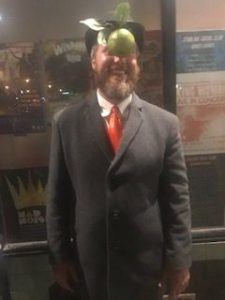 I met Rene Magritte a few weeks ago at the Starline Social Club in Oakland. A surprisingly jolly fellow, it turns out he’s working these days as a pedicab driver in San Francisco. Surrealism isn’t my jam, but when he offered me a pickup the next morning at the BART and mushrooms and tickets for two to the retrospective of his work at SFMoMA, well—I had to accept.
I met Rene Magritte a few weeks ago at the Starline Social Club in Oakland. A surprisingly jolly fellow, it turns out he’s working these days as a pedicab driver in San Francisco. Surrealism isn’t my jam, but when he offered me a pickup the next morning at the BART and mushrooms and tickets for two to the retrospective of his work at SFMoMA, well—I had to accept.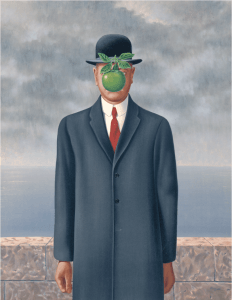
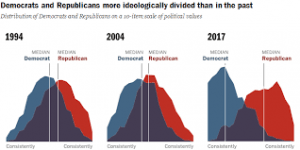
 Magnus Carlsen and Fabiano Caruana faced off for the World Chess Championship over three weeks London. I’d been looking forward to the match all year, and following the progress of the two players towards it. This piece looks at the two players and the situation before the match, gives an account of the Championship games, and concludes with some reflections on the significance of the match for the participants, and for the sport.
Magnus Carlsen and Fabiano Caruana faced off for the World Chess Championship over three weeks London. I’d been looking forward to the match all year, and following the progress of the two players towards it. This piece looks at the two players and the situation before the match, gives an account of the Championship games, and concludes with some reflections on the significance of the match for the participants, and for the sport.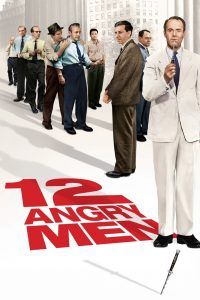 I recently rewatched “12 Angry Men” with The Philosophy Club at the University of Iowa as part of their “Owl of Minerva” film series. The 1957 film has the late, great Henry Fonda as the lone holdout on a jury ready to convict a poor, abused 18-year-old boy for allegedly stabbing his father to death. Over one long, tense evening (shown in something close to real-time), juror #8 – none of the jurors are identified by name, only number – forces the rest of the jury to methodically reexamined the evidence. It’s not a courtroom drama, it’s a jury-room drama in which only 3 of 1:36 minutes of running time take place outside the sweaty, claustrophobic jury room. The film is intense, moving, and effective. Afterwards, I made the following remarks.
I recently rewatched “12 Angry Men” with The Philosophy Club at the University of Iowa as part of their “Owl of Minerva” film series. The 1957 film has the late, great Henry Fonda as the lone holdout on a jury ready to convict a poor, abused 18-year-old boy for allegedly stabbing his father to death. Over one long, tense evening (shown in something close to real-time), juror #8 – none of the jurors are identified by name, only number – forces the rest of the jury to methodically reexamined the evidence. It’s not a courtroom drama, it’s a jury-room drama in which only 3 of 1:36 minutes of running time take place outside the sweaty, claustrophobic jury room. The film is intense, moving, and effective. Afterwards, I made the following remarks.
